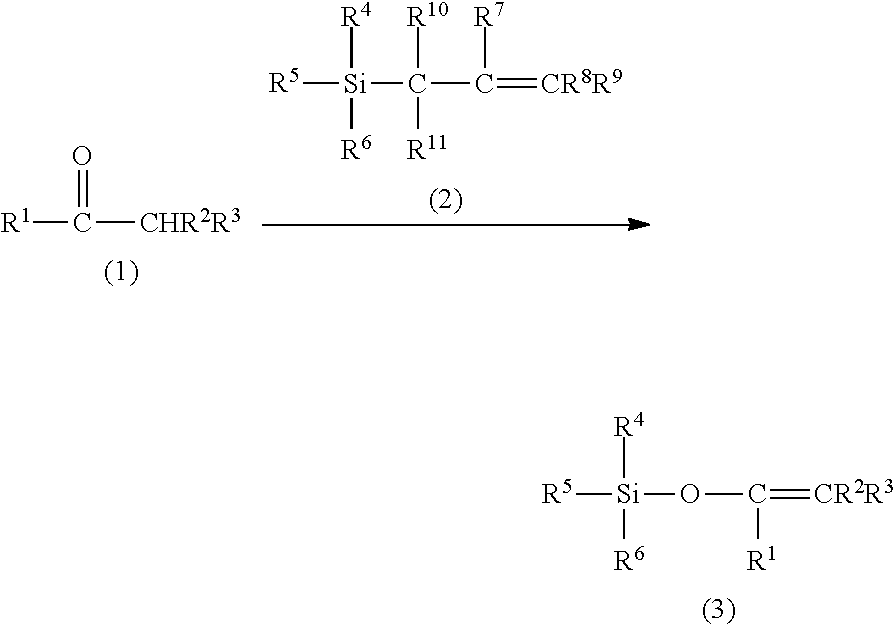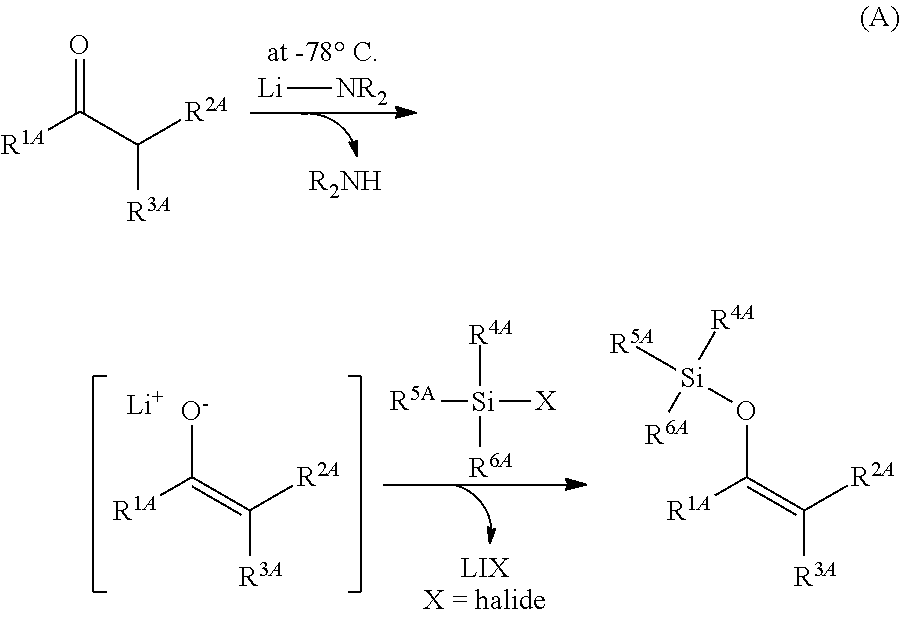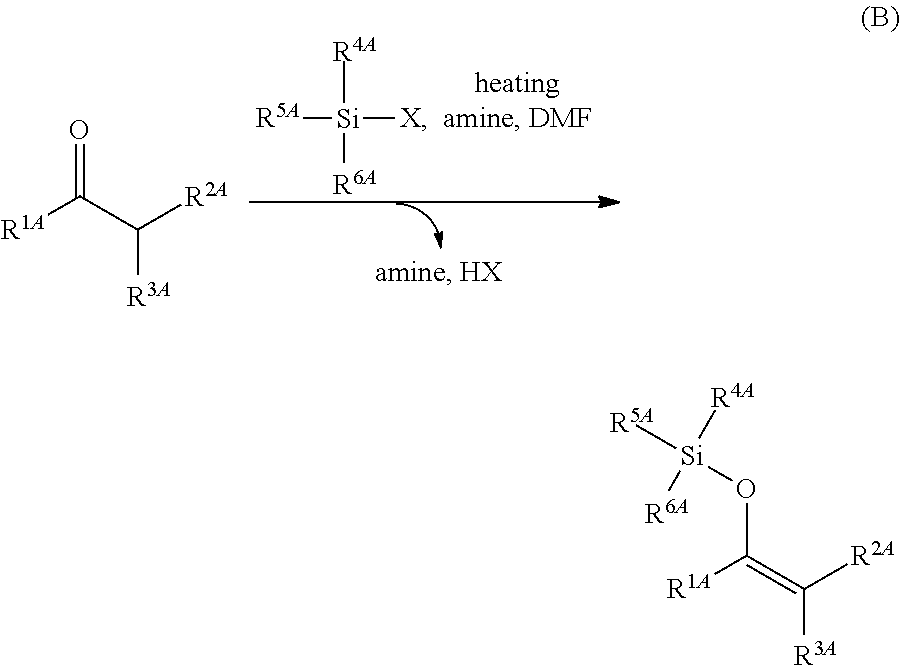Method for producing silylenol ethers
a technology of silylenol and ether, which is applied in the direction of silicon organic compounds, steroid production, organic chemistry, etc., can solve the problems of difficult handling of silylating agents, insufficient reaction, and insufficient production of stoichiometrics, so as to achieve convenient purification method and reduce waste (coproducts) generated during reaction. , the effect of reducing the amount of was
- Summary
- Abstract
- Description
- Claims
- Application Information
AI Technical Summary
Benefits of technology
Problems solved by technology
Method used
Image
Examples
example 1
[0096]
[0097]Into a two-necked flask were placed 4-tert-butylcyclohexanone (74.1 mg, 0.480 mmol), and toluene (5.0 ml) as a solvent, and the mixture was subjected to heating under reflux conditions under an argon atmosphere. After the start of the refluxing, allyltrimethylsilane (82.3 mg, 0.720 mmol) was added, and a solution (0.1 M) of triflic imide (1.35 mg, 4.80 μmol) in toluene was added dropwise. After 5 min, triethylamine (0.486 mg, 4.80 μmol) was added, and the mixture was reacted for 10 min. Thereafter, cooled aqueous sodium hydrogen carbonate solution was added, and the mixture was extracted with hexane and dried over sodium sulfate. The solvent was evaporated under reduced pressure and purified by column chromatography to give the object product 4-tert-butyl-1-trimethylsilyloxy-1-cyclohexene (yield 88%).
example 2
[0098]Using ketones 1a, 1k, 1c, 1d and 1e described in the following Table 1 as a substrate, and in the same manner as in Example 1, the reaction was performed to give silyl enol ethers 3a, 3k, 3c and 3c′, 3d and 3d′, and 3e and 3e′, respectively. The resultant products were purified by distillation or column chromatography. The yield and isomer ratio are shown in Table 1.
TABLE 1substrateproductyield (%)82889794 (87:13)89 (93:7)96 (98:2)
example 3
[0099]Using ketones 1f, 1g, 1h, 1i and 1j described in the following Table 2 as a substrate and allyltriisopropylsilane (3 equivalents relative to the substrate) instead of allyltrimethylsilane, and in the same manner as in Example 1, the reaction was performed to give silyl enol ethers 4f, 4g, 4h and 4h′, 4i and 4i′, and 4j, respectively. The resultant products were purified by distillation or column chromatography. The yield and isomer ratio are shown in Table 2.
TABLE 2substrateproductyield (%)929172 (77:23)70 (73:27)54
PUM
| Property | Measurement | Unit |
|---|---|---|
| pKa | aaaaa | aaaaa |
| temperature | aaaaa | aaaaa |
| temperature | aaaaa | aaaaa |
Abstract
Description
Claims
Application Information
 Login to View More
Login to View More - R&D
- Intellectual Property
- Life Sciences
- Materials
- Tech Scout
- Unparalleled Data Quality
- Higher Quality Content
- 60% Fewer Hallucinations
Browse by: Latest US Patents, China's latest patents, Technical Efficacy Thesaurus, Application Domain, Technology Topic, Popular Technical Reports.
© 2025 PatSnap. All rights reserved.Legal|Privacy policy|Modern Slavery Act Transparency Statement|Sitemap|About US| Contact US: help@patsnap.com



